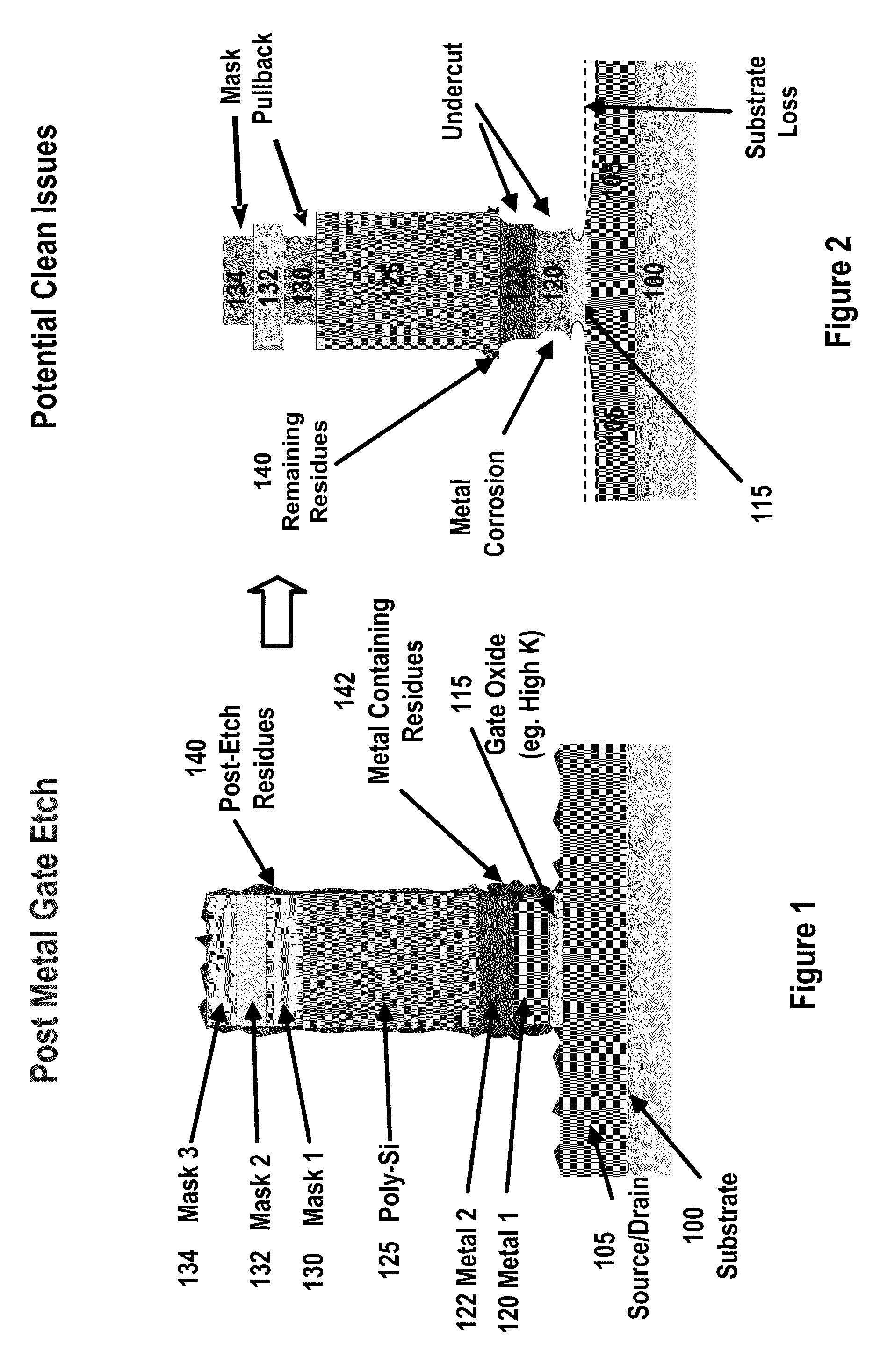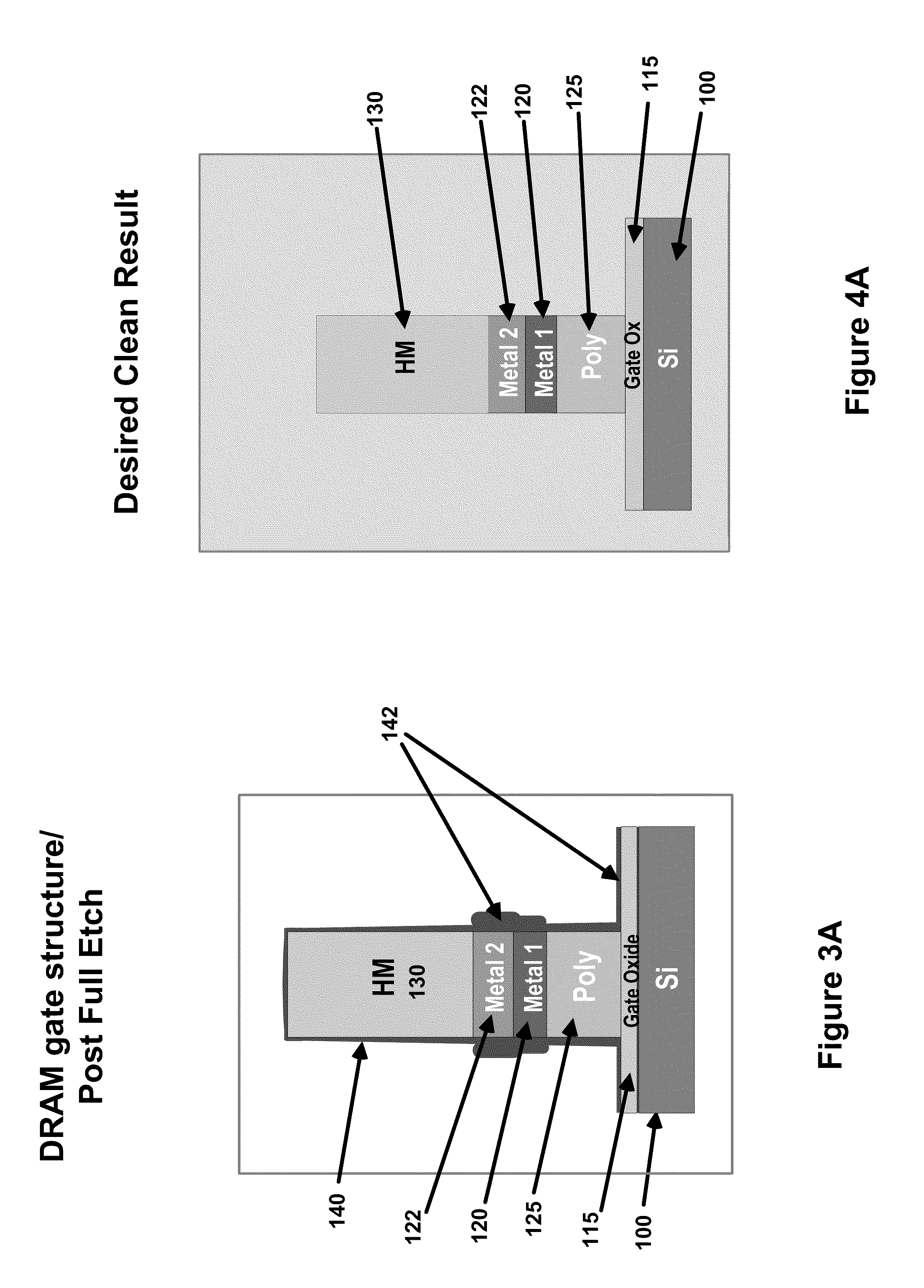Method and apparatus for surface treatment of semiconductor substrates using sequential chemical applications
a technology of semiconductor substrates and chemical applications, applied in the direction of cleaning processes and apparatus, cleaning using liquids, semiconductor/solid-state device testing/measurement, etc., can solve the problems of inefficient removal of polymer residues, material or chemical used in fabrication operations to which the substrate is exposed, and potential source of contamination, etc., to achieve the effect of efficiently removing polymer residue contaminants
- Summary
- Abstract
- Description
- Claims
- Application Information
AI Technical Summary
Benefits of technology
Problems solved by technology
Method used
Image
Examples
Embodiment Construction
[0024]Several embodiments for effectively removing polymer residues, including metal containing polymer residues, from around a metal gate structure formed on a surface of a substrate will now be described. It will be obvious, however, to one skilled in the art, that the present invention may be practiced without some or all of these specific details. In other instances, well known process operations have not been described in detail in order not to unnecessarily obscure the present invention.
[0025]Effective removal of contaminants, such as polymer residues and metal containing polymer residues, from the surface of a substrate helps in retaining the functionality of the features formed on the substrate and the resulting devices, such as microchips. In one embodiment of the invention, the polymer residues formed around a metal gate structure are removed by sequentially applying aggressive chemistries to the surface of the substrate. The aggressive chemistries are applied in a very co...
PUM
 Login to View More
Login to View More Abstract
Description
Claims
Application Information
 Login to View More
Login to View More - R&D
- Intellectual Property
- Life Sciences
- Materials
- Tech Scout
- Unparalleled Data Quality
- Higher Quality Content
- 60% Fewer Hallucinations
Browse by: Latest US Patents, China's latest patents, Technical Efficacy Thesaurus, Application Domain, Technology Topic, Popular Technical Reports.
© 2025 PatSnap. All rights reserved.Legal|Privacy policy|Modern Slavery Act Transparency Statement|Sitemap|About US| Contact US: help@patsnap.com



